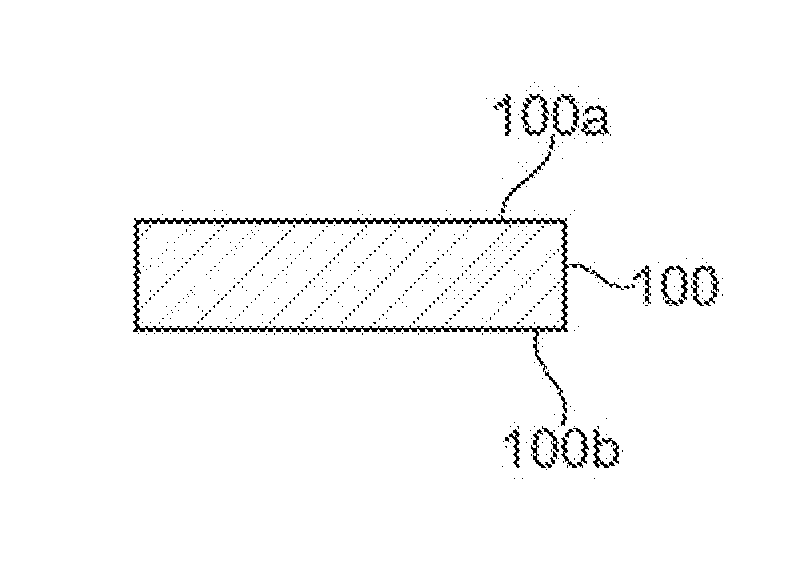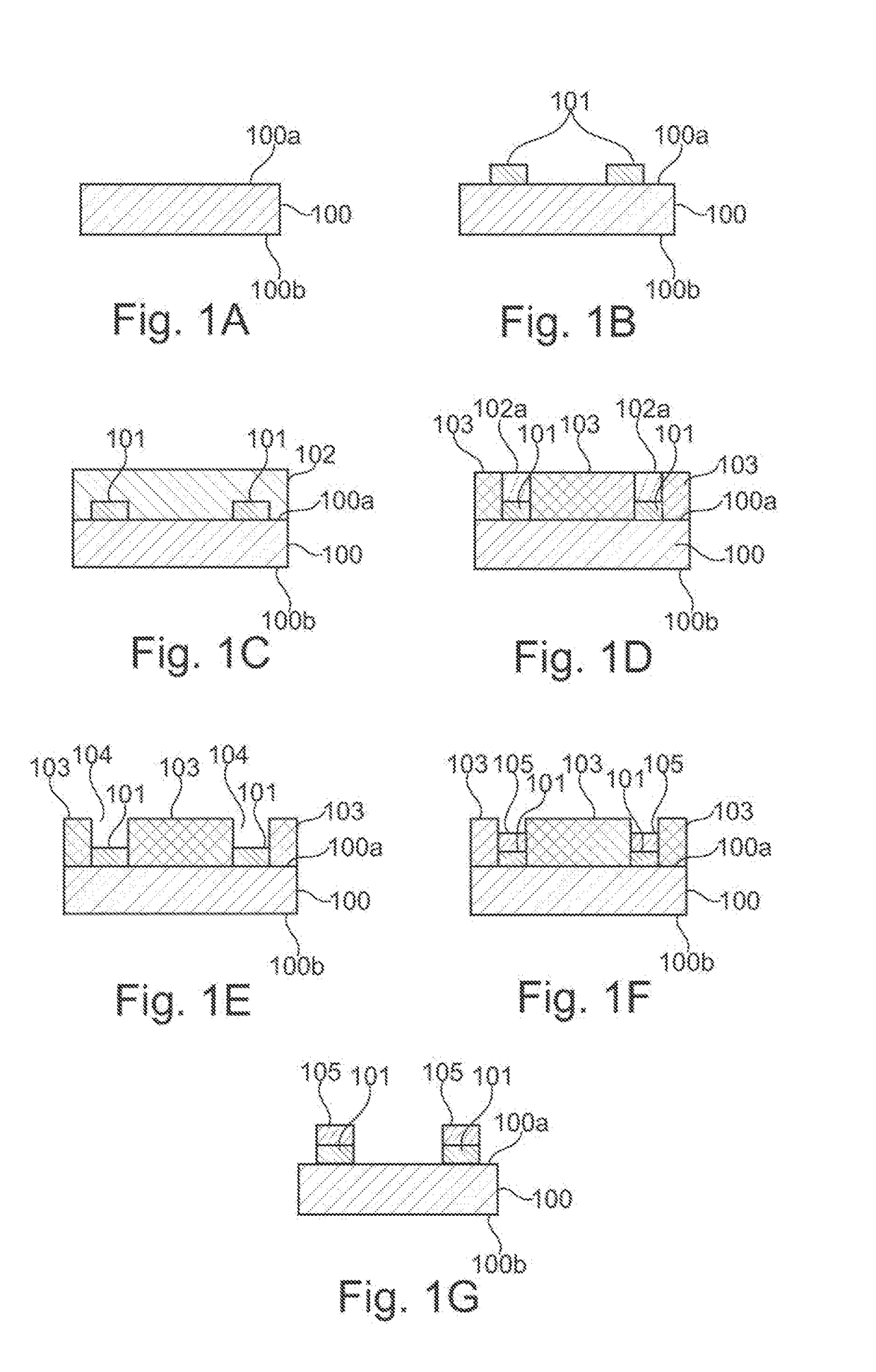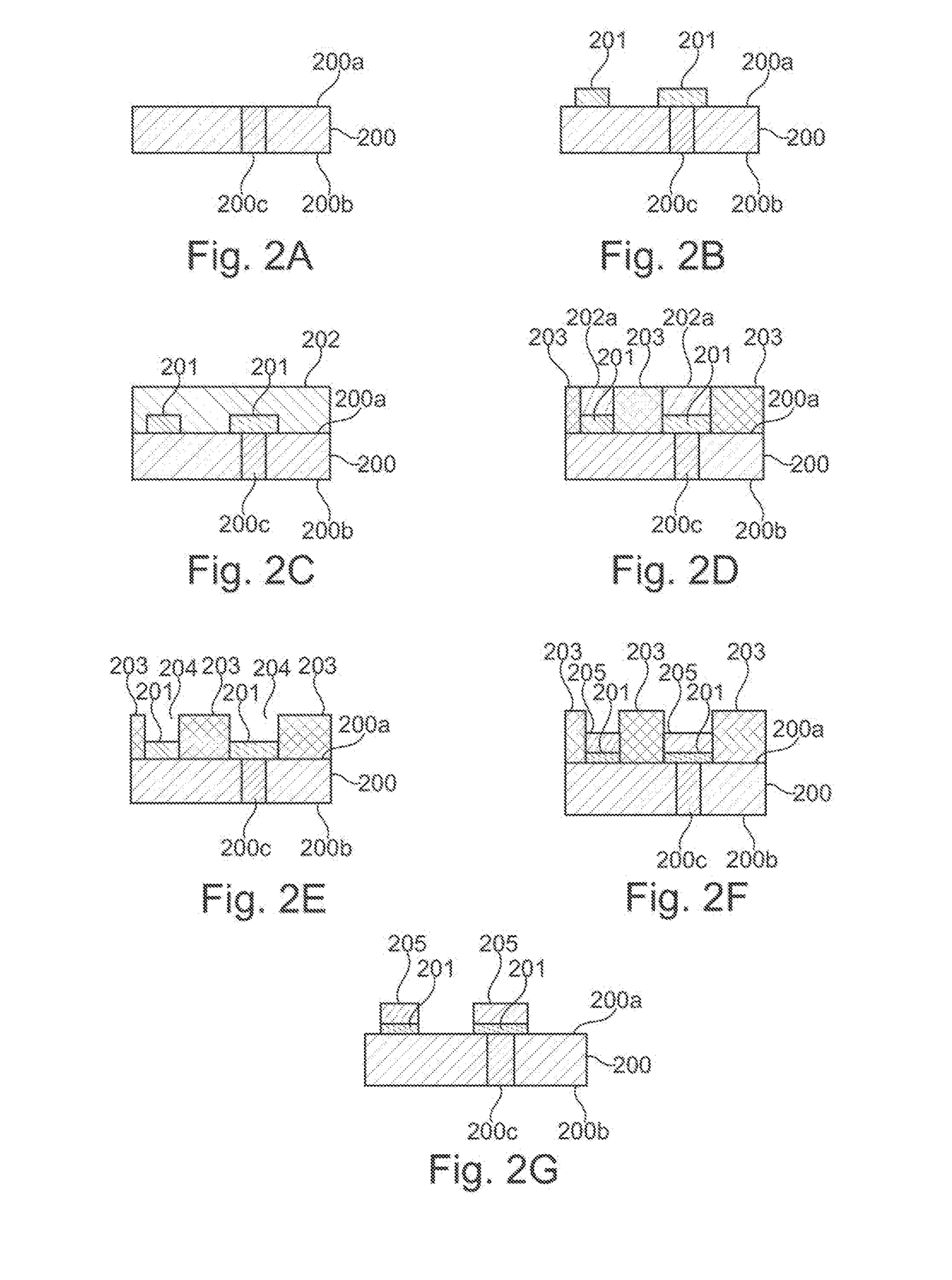Method for fine line manufacturing
- Summary
- Abstract
- Description
- Claims
- Application Information
AI Technical Summary
Benefits of technology
Problems solved by technology
Method used
Image
Examples
Embodiment Construction
[0027]In the first step (i) of the process according to the invention as shown inFIG. 1A, a substrate (100) is provided. This substrate has a front side (100a) and a back side (100b) which are located opposite to each other. Preferably, the front side (100a) and the back side (100b) are parallel to each other. Substrates to be used in the process according to the present invention are transparent substrates. Transparency in the context of the present invention is to be understood that electromagnetic radiation used in step (iv) to photo-cure the photosensitive composition which is located on the front side (100a) of the substrate (100) can substantially transmit the substrate (100). Substantial transmission is preferably to be understood that 80% of the electromagnetic radiation can pass through the transparent substrate, i.e. the electromagnetic radiation is neither absorbed nor reflected by the transparent substrate (100). If the substrate only allows for a lower transmission of t...
PUM
| Property | Measurement | Unit |
|---|---|---|
| Length | aaaaa | aaaaa |
| Thickness | aaaaa | aaaaa |
| Width | aaaaa | aaaaa |
Abstract
Description
Claims
Application Information
 Login to View More
Login to View More - R&D Engineer
- R&D Manager
- IP Professional
- Industry Leading Data Capabilities
- Powerful AI technology
- Patent DNA Extraction
Browse by: Latest US Patents, China's latest patents, Technical Efficacy Thesaurus, Application Domain, Technology Topic, Popular Technical Reports.
© 2024 PatSnap. All rights reserved.Legal|Privacy policy|Modern Slavery Act Transparency Statement|Sitemap|About US| Contact US: help@patsnap.com










